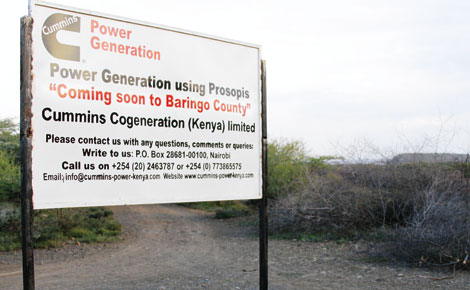×
The Standard e-Paper
Informed Minds Prefer The Standard
 |
| Cummins Cogeneration (Kenya) Limited will pilot a project to generate power using the invasive Mathenge weed. [Photo: Boniface Thuku/Standard] |
By Robert Kiplagat
Baringo, Kenya: It’s a dreaded weed introduced to curb desertification in the arid areas of Baringo County but has caused more suffering to the communities than good.